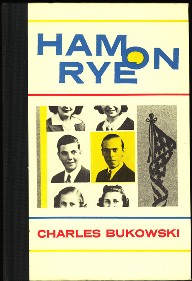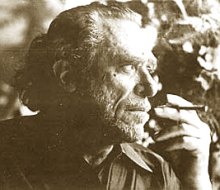
Henry Charles Bukowski was a German-American poet, novelist, and short story writer. His writing was influenced by the social, cultural, and economic ambience of his adopted home city of Los Angeles. Bukowski's work addresses the ordinary lives of poor Americans, the act of writing, alcohol, relationships with women, and the drudgery of work. The FBI kept a file on him as a result of his column Notes of a Dirty Old Man in the LA underground newspaper Open City.
John Fante was an American novelist, short story writer, and screenwriter. He is best known for his semi-autobiographical novel Ask the Dust (1939) about the life of Arturo Bandini, a struggling writer in Depression-era Los Angeles. It is widely considered the great Los Angeles novel, and is one in a series of four, published between 1938 and 1985, that are now collectively called "The Bandini Quartet". Ask the Dust was adapted into a 2006 film starring Colin Farrell and Salma Hayek. Fante's published works while he lived included five novels, one novella, and a short story collection. Additional works, including two novels, two novellas, and two short story collections, were published posthumously. His screenwriting credits include, most notably, Full of Life, Jeanne Eagels (1957), and the 1962 films Walk on the Wild Side and The Reluctant Saint.
Henry Charles "Hank" Chinaski is the literary alter ego of the American writer Charles Bukowski, appearing in five of Bukowski's novels, a number of his short stories and poems, and the films Barfly and Factotum. Although much of Chinaski's biography is based on Bukowski's own life story, the Chinaski character is still a literary creation that is constructed with the veneer of what the writer Adam Kirsch calls "a pulp fiction hero." Works of fiction that feature the character include Confessions of a Man Insane Enough to Live With the Beasts (1965), Post Office (1971), South of No North (1973), Factotum (1975), Women (1978), Ham on Rye (1982), Hot Water Music (1983), Hollywood (1989), and Septuagenarian Stew (1990). He is also mentioned briefly in the beginning of Bukowski's last novel, Pulp (1994).
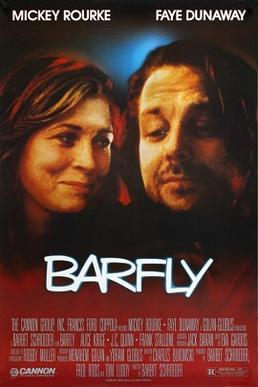
Barfly is a 1987 American black comedy film directed by Barbet Schroeder and starring Mickey Rourke and Faye Dunaway. The film is a semi-autobiography of poet/author Charles Bukowski during the time he spent drinking heavily in Los Angeles, and it presents Bukowski's alter ego Henry Chinaski. The screenplay, written by Bukowski, was commissioned by the Iranian-born Swiss film director Barbet Schroeder, and it was published in 1984, when film production was still pending.

Post Office is the first novel written by the German-American author Charles Bukowski, published in 1971. The book is an autobiographical memoir of Bukowski's years working at the United States Postal Service. The film rights to the novel were sold in the early 1970s, but a film has not been made thus far.

Factotum is a 2005 French-Norwegian dark comedy-drama film co-written and directed by Bent Hamer, adapted from the 1975 novel of the same name by Charles Bukowski. It stars Matt Dillon as Bukowski's alter ego, Henry Chinaski. Although events in the book take place in Los Angeles in the 1940s, the film has a contemporary setting.

Women is a 1978 novel written by Charles Bukowski, starring his semi-autobiographical character Henry Chinaski. In contrast to Factotum, Post Office and Ham on Rye, Women is centered on Chinaski's later life, as a celebrated poet and writer, not as a dead-end lowlife. It does, however, feature the same constant carousel of women with whom Chinaski only finds temporary fulfillment.
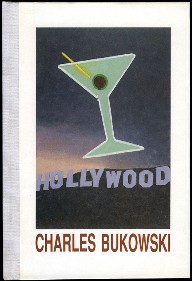
Hollywood is a 1989 novel by Charles Bukowski which fictionalizes his experiences writing the screenplay for the film Barfly and taking part in its tumultuous journey to the silver screen. It is narrated in the first person.

Ask the Dust is the most popular novel of American author John Fante, first published in 1939 and set during the Great Depression era in Los Angeles. It is one of a series of novels featuring the character Arturo Bandini as Fante's alter ego, a young Italian-American from Colorado struggling to make it as a writer in Los Angeles.

Tales of Ordinary Madness is a 1981 film by Italian director Marco Ferreri. It was shot in English in the United States, featuring Ben Gazzara and Ornella Muti in the leading roles. The film's title and subject matter are based on the works and the person of US poet Charles Bukowski, including the short story The Most Beautiful Woman in Town.
“A Boy in France” is an uncollected work of short fiction by J. D. Salinger which appeared in the 31 March, 1945 issue of The Saturday Evening Post.
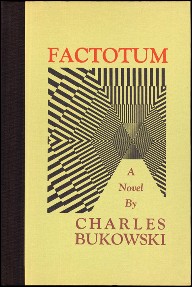
Factotum (1975) is a picaresque novel by American author Charles Bukowski. It is Bukowski’s second novel and a prequel to Post Office (1971).
“Both Parties Concerned” is an uncollected work of short fiction by J. D. Salinger which appeared in the 26 February, 1944 issue of The Saturday Evening Post.

Pulp is the last completed novel by Los Angeles poet and writer Charles Bukowski. It was published in 1994, shortly before Bukowski's death. He began writing it in 1991 and encountered several problems during its creation. He fell ill during the spring of 1993, only three-quarters of the way through Pulp.
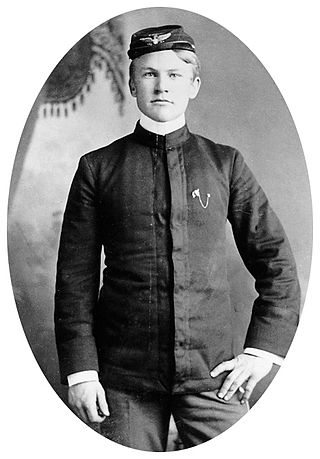
Leslie Lynch King Sr. was the biological father of U.S. President Gerald Ford. Because of his alcoholism and abusive behavior, his wife, Dorothy Gardner, left him sixteen days after Ford's birth.
John Galt is a character in Ayn Rand's novel Atlas Shrugged (1957). Although he is not identified by name until the last third of the novel, he is the object of its often-repeated question "Who is John Galt?" and of the quest to discover the answer. Also, in the later part it becomes clear that Galt had been present in the book's plot all along, playing several important roles though not identified by name.

South of No North is a collection of short stories by Charles Bukowski, originally published in 1973 as South of No North: Stories of the Buried Life by John Martin's Black Sparrow Press. South of No North also is a play that debuted off-Broadway in 2000 based on nine stories from the book.
"The Killers" is a short-story by Charles Bukowski collected in his 1973 collection South of No North, originally published by John Martin's Black Sparrow Press. The story elucidates Bukowski's publicly acknowledged artistic debt to Ernest Hemingway, the writer who had the most influence on American writers of Bukowksi's generation. Like Hemingway's "The Killers", Bukowski's story of the same name has as its thematic trope murder in a nihilistic universe. Unlike Hemingway, the killers actually accomplish their act in the time-frame of the story.

Old Grand-Dad is a brand of bourbon whiskey distilled at the Jim Beam distillery in Clermont, Kentucky. The brand was created by Raymond B. Hayden and named after his grandfather Meredith Basil Hayden Sr., who was a well known distiller during his lifetime. A fanciful portrait of Hayden Sr. is depicted on the front of each bottle. Today, it is owned and produced by Beam Suntory.
Charles Bukowski's work has influenced popular culture many times over in many forms, and his work has been referenced in film, television, music and theater.
